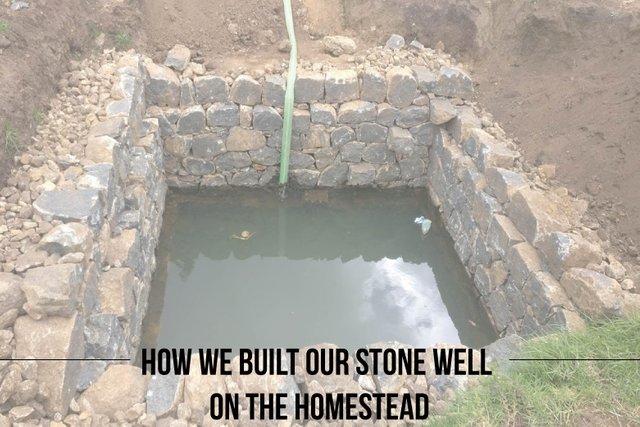
This post is about how we built our stone well on the homestead from local materials.
The first infrastructure project we undertook after our land was fenced and terraced, was to locate and fortify a water source. This isn't a well in the traditional sense, in that it doesn't draw from groundwater, but is fed by an underground spring. We can even make use of the nearby stream to channel water into our well. It's really more of a recharge pit than a conventional well, but serves as the source to water our crops in the dry season. Eventually we need to plan out swales and a 2-step tank system but as of 2017, this was the main water source we had for tea making, cooking and watering plants when it wasn't raining.
To start with, we had a water diviner determine the location of our water source using some combination of mystic ancient arts and science. We then hired a machine to dig out the pit there, that sure enough was connected to an underground spring, an idea place to place a water source for our land.
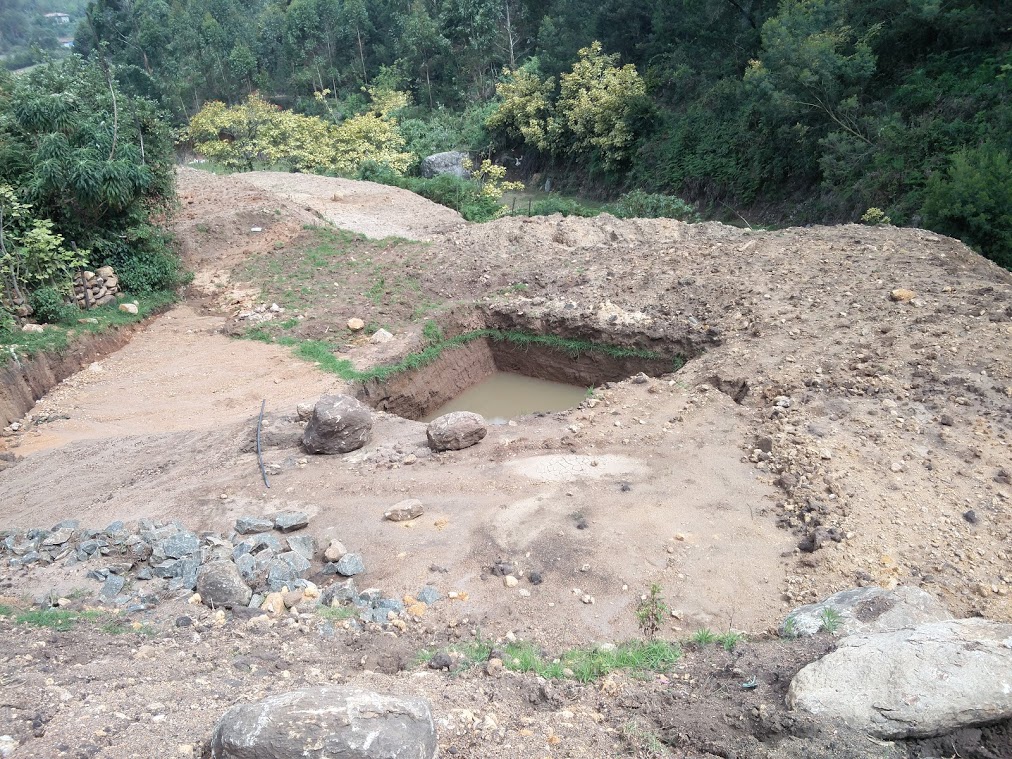
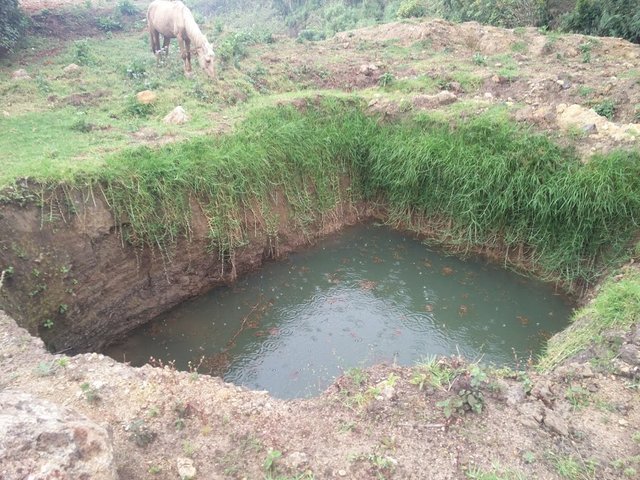
We also bought a small petrol pump to get water out from the pit. The petrol based pump was a fraction of the cost of a solar pump and is only needed in the dry season. I hope to eventually have swales and other earthworks that will irrigate our land naturally from the abundant rainfall. As a start, we used the petrol pump to get the job done. It took a few tries to get everything working right. If the pump worked, the pipes leaked.If the pipes worked, the pump stopped. Murphy's law in action. We finally managed to get the entire assembly working and the triumph of doing that is echoed in the faces of the workers.
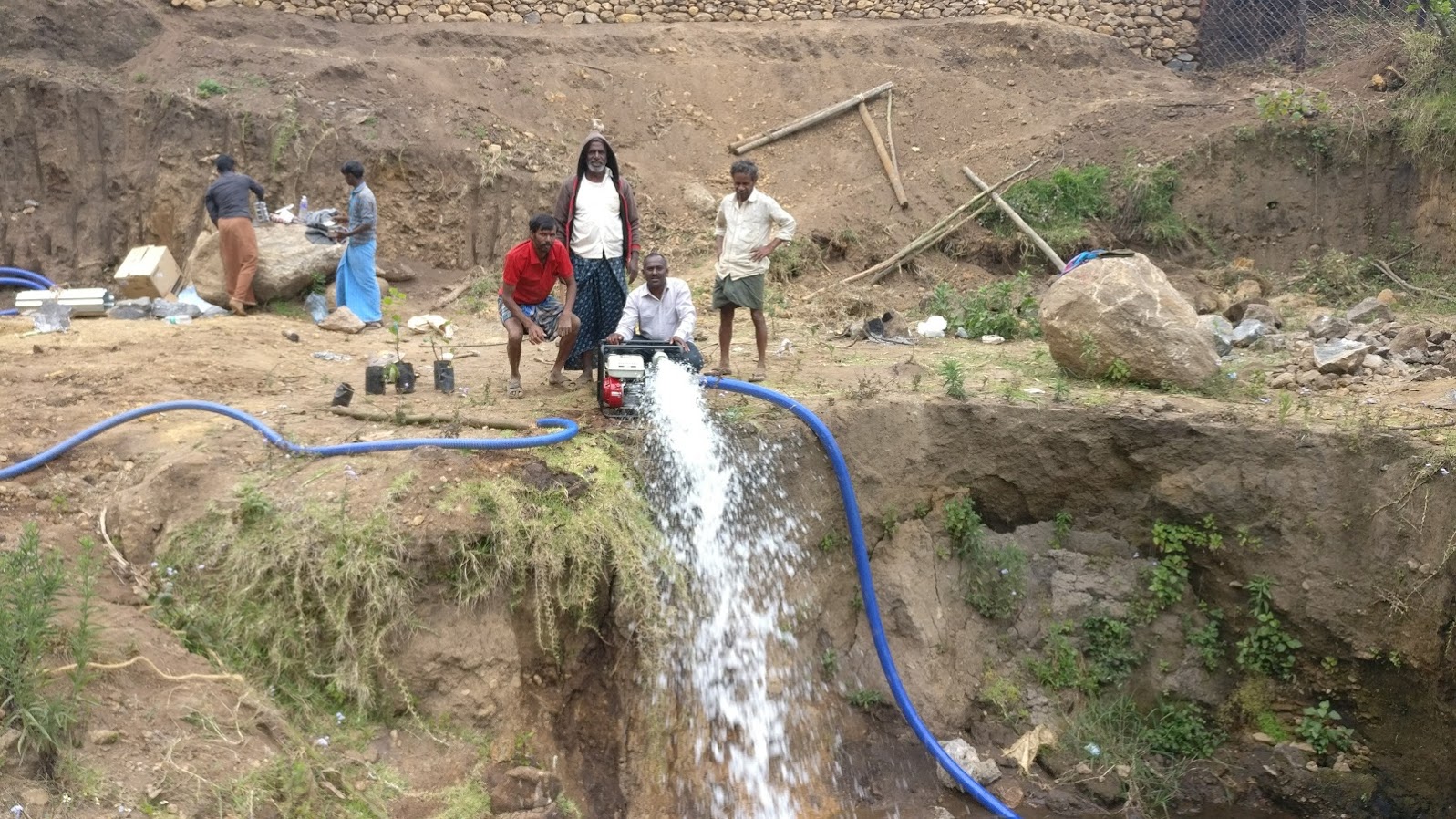
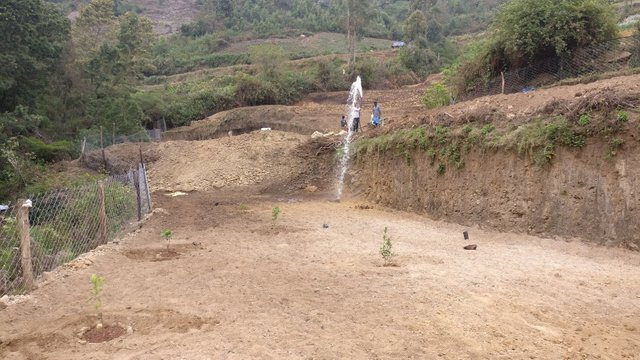
It soon became clear that our pit had to be fortified to protect it from collapsing or eroding in the heavy rains and other forces of nature. I was adamant that we don't use cement as a good number of local farmers have, simply because it isn't a local material. Kodaikanal is boulder territory and it makes sense to use the materials we have onsite to the best of our ability. To do this, we hired a local mason who was excellent at cutting our boulders by hand, and making them all fit together.
To begin with, we used our pump to drain the pit, and cleared it of rubble and mud to form a square shaped base.
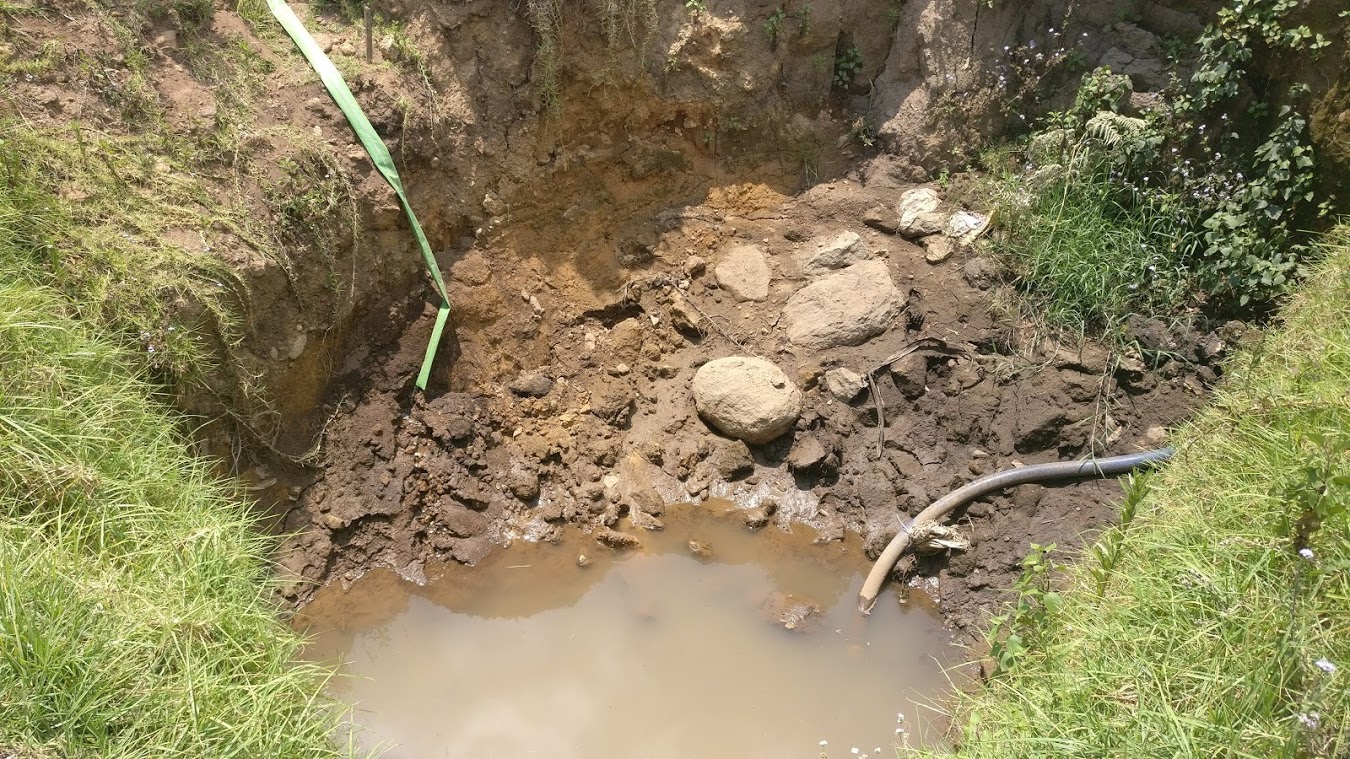
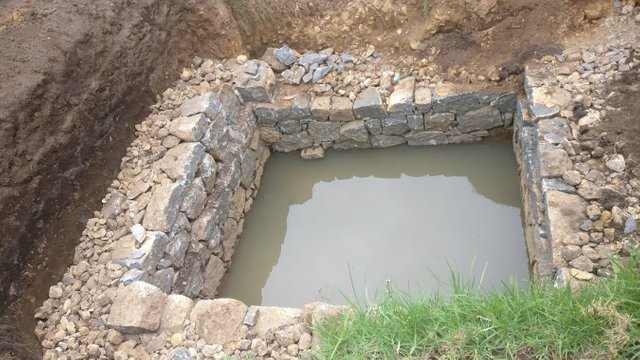
The sides are fortified with rock walls, with the rocks simply stacked on top of each other. Each rock is cut from a larger rock with a chisel in such a way that the pieces interlock with each other like a jigsaw puzzle. Smaller rocks and pebbles then plug in the gaps. Plumb lines are used to ensure the walls are straight. The well is built up in layers, starting from the bottom. The mason even included stepping stones to descend into the well if needed. Slowly, all the sides are fortified.
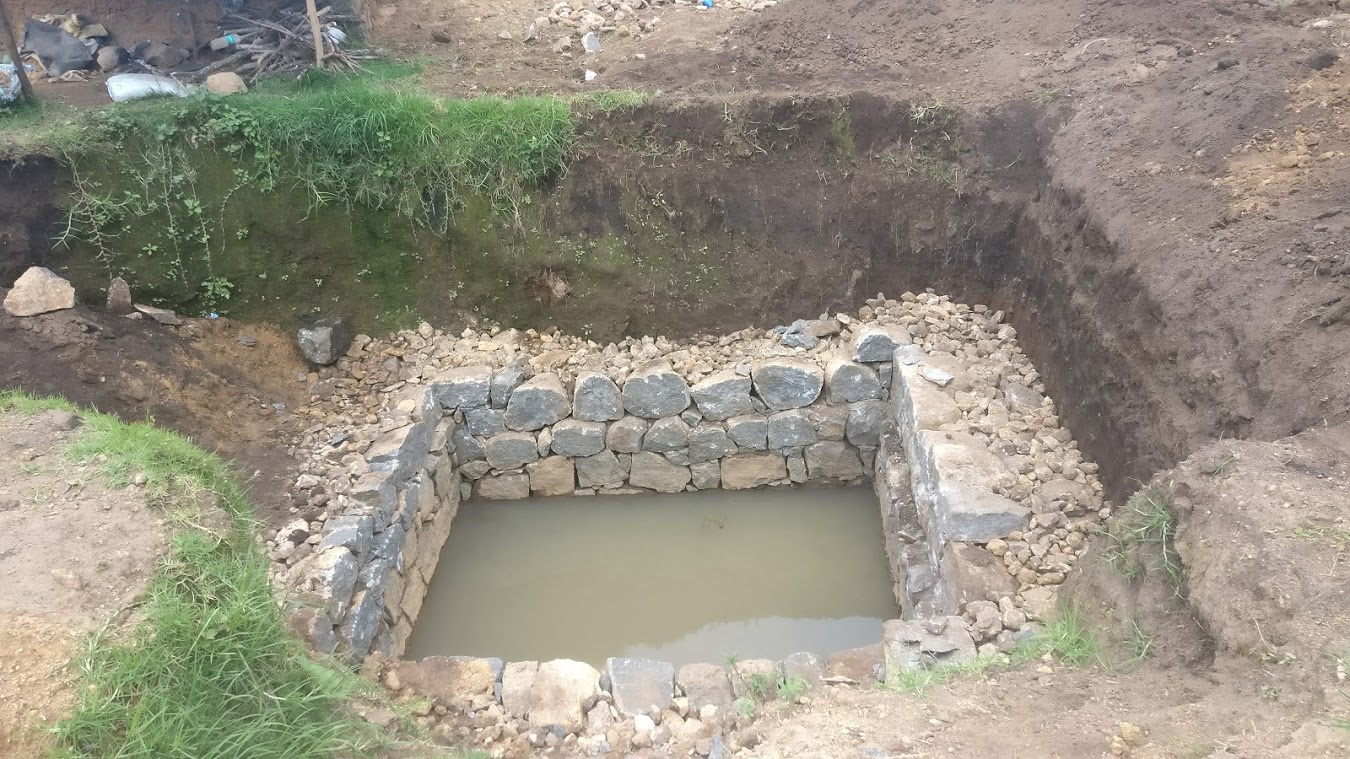
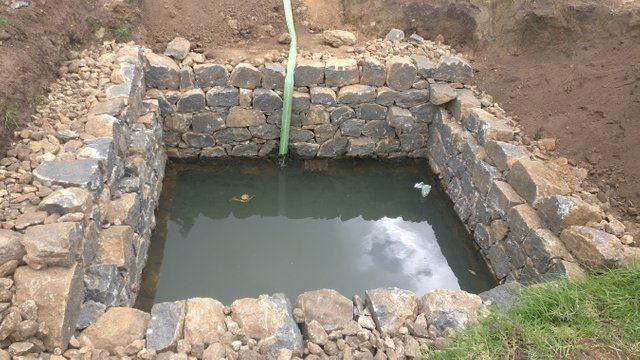
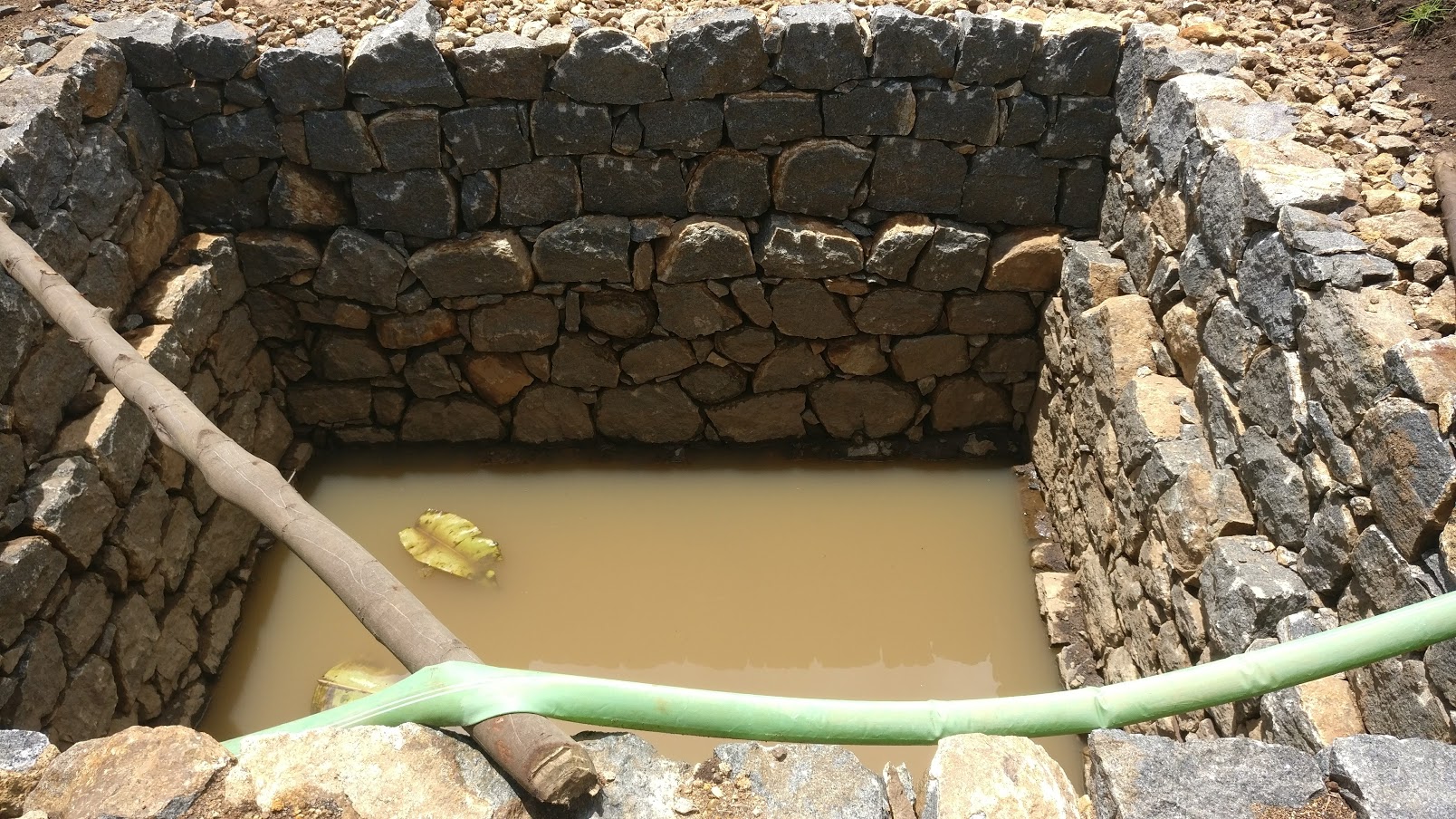
The last step is to place earth bags on top and bury the inlet pipe from the stream so that it doesn't get disturbed. The pipe can be disconnected from the stream side if the well gets too full.
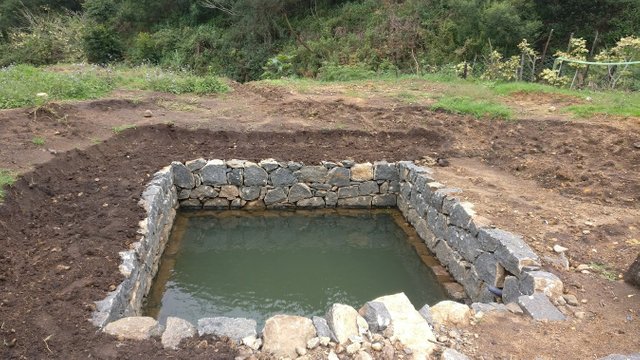
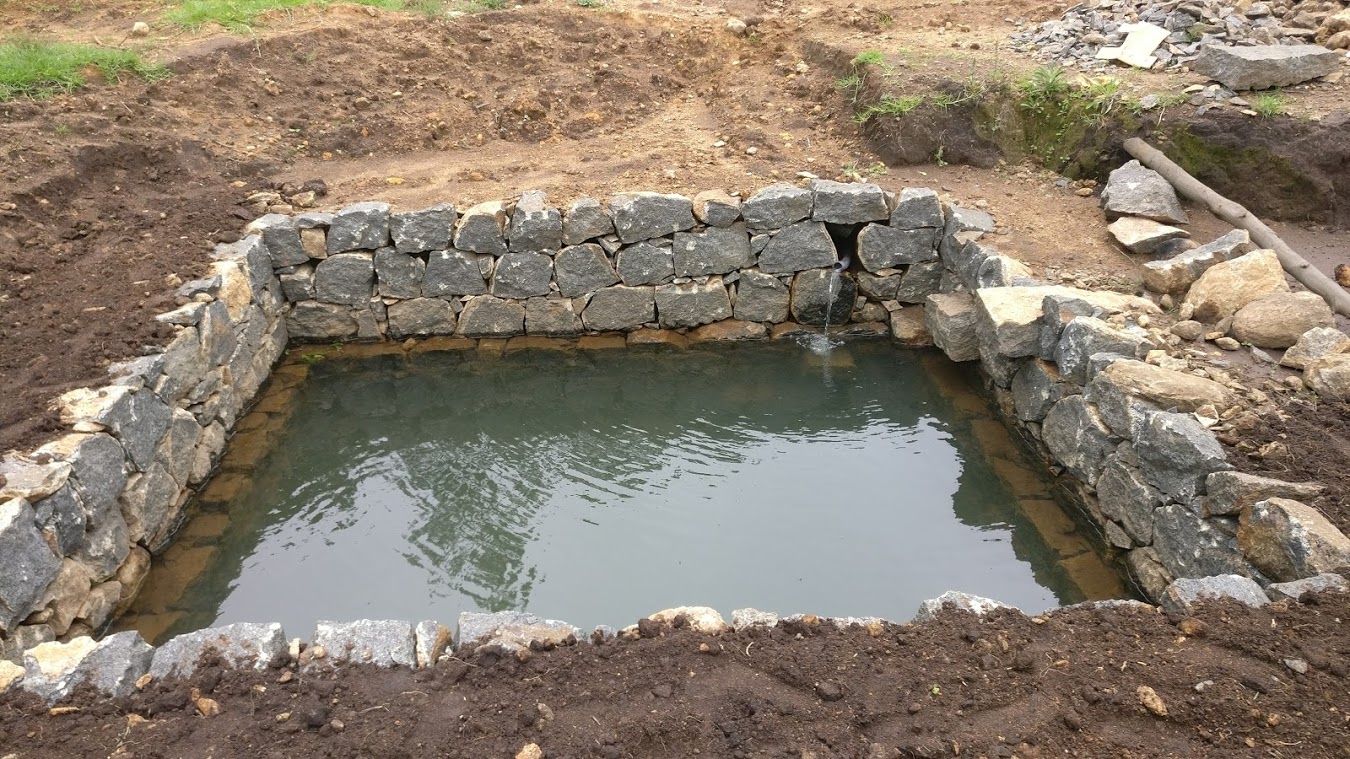
.jpg)
The well after a heavy monsoon that filled it up.
.gif) The well measures around 20 feet in length, breadth and height. The entire build took around two and a half months between July and September of 2017. There is some seepage in the cracks between the rocks, but it isn't necessarily a bad thing as the surrounding plants get a drip irrigation of sorts. So far the monsoons and stream have replenished the water levels. We need to see if the water holds in the hottest months of March-April and if the evaporation/leakage is too much we will need to fill in the gaps in the rock wall with a lime plaster.
The next step is to plan swales and rain water collection tanks. As this well is on the bottom of our land we should also consider a tank on the top of our land which can be filled from this well, and gravity feed everything below. This was a great start in addressing our water usage, and there is a lot more yet to come.
The well measures around 20 feet in length, breadth and height. The entire build took around two and a half months between July and September of 2017. There is some seepage in the cracks between the rocks, but it isn't necessarily a bad thing as the surrounding plants get a drip irrigation of sorts. So far the monsoons and stream have replenished the water levels. We need to see if the water holds in the hottest months of March-April and if the evaporation/leakage is too much we will need to fill in the gaps in the rock wall with a lime plaster.
The next step is to plan swales and rain water collection tanks. As this well is on the bottom of our land we should also consider a tank on the top of our land which can be filled from this well, and gravity feed everything below. This was a great start in addressing our water usage, and there is a lot more yet to come.

| PAL-Minnow Support Project | Homesteaders Online |














.jpg)
.gif)















.jpg)
.gif)



Great stuff! Wells will become more important as water gets harder to find. Youll be shead of the game!
So true. We're lucky to be blessed with decent rainfall and a stream that so far hasn't dried up, but its important to make use of those resources and catch and store that energy. Water is an important resource to have which is why we made it a priority.
Love seeing stuff like this. It just tell's me anything is possible.
Thanks, it was refreshing to see that people still retain their ancestral knowledge and techniques and that indeed anything is possible if you put your mind to it.
Wow, this is a great build. Custom cut stone from local sources adds an amazing touch here. The cost for something like that here would be astronomical. I’d be interested in hearing exactly how the spring was located by the water diviner. That’s awesome!
The most expensive part of the build is the labour. I'm lucky to have the parents helping out with the farm expenses. We also found great people to help out on the build.
The water divining is an ancient art I don't really know too much about. The diviner uses a sort of special stick that they use as compass, as they walk around scanning the area. The stick is supposed to bend in the direction of underground water. Diviners have developed an extra sensitivity and use their intuition to judge the best location. Maybe, there's some magic involved? Who knows, all I know is that ours eventually picked the perfect spot.
this is amazing! well done and very impressive. i love that you all built this, it's such an empowering act, being in relation with water <3
Thank you. It really did celebrate the community and the surroundings. We could've easily just poured some concrete in a mould, but building it this way really echoed the principles of permaculture. The people as I mentioned to walkerland have been truly amazing.
This is incredible. Such a lot of work for everyone but I think it's wonderful that you used local resources and skill. It would have been quite the thing to watch it all come together. Thanks for sharing.
Thank you. Yes, it was really awesome to see it come together. Mountain folk constantly amaze me, and it isn't only the men. The women were equally hard working and really strong. We actually had more women working on this build than men.
Wow check that out! Its beautiful. Im impressed and amazed that there is still mason(ers?) people that will hand cut boulders. What a skill to have!Bravo to you and all the workers. A job to be proud of :)
Thank you! We found our mason by asking our neighbours to reach out to their local contacts. It is a dying art, but there are people who still retain knowledge and techniques from their grandparent's time. I hope our locals will eventually realize the power and beauty of their ancestral knowledge, and more people will consider local materials for builds.
I hope so too. It is amazing!
Great post. Love the progress photos and the finished well. I was just saying how ever for non-homesteaders this could be a nice project for a pond for fish or livestock to use, or even simply for decoration. the stone look is great.
Thank you. I don't think you need to have a homestead to be a homesteader. It's as much a mentality than a physicality. This type of build can definitely be used on a smaller scale for various purposes. I'd suggest it only if rocks/boulders are available in abundance in your area though. Local materials often turn out to be the best for builds.
Those rock walls are amazing! It's an almost lost craft here and hiring someone + getting the material would make the project costlier than an year's worth of an average salary for certain! You're very lucky indeed, very-very lucky, as an Indian friend of mine used to say!
Thank you. We're lucky to have had the material in abundance. The expensive part was hiring the labour which my parents helped out with. It would've cost somewhere around 1500 US$ in total, which in Indian standards is quite a lot. It's a one time investment though as this build will hopefully last a lifetime. We're very very lucky indeed.
That is artistry! Those beautiful rock walls. The whole build looks like it needed a lot of planning and alot if skill! @freedompoint
Thank you. The skill and planning all came from our head mason who was just brilliant and able to direct the team towards the end result. He's a local from the village nearby who was employed when we asked our neighbours to reach out for a stone mason.